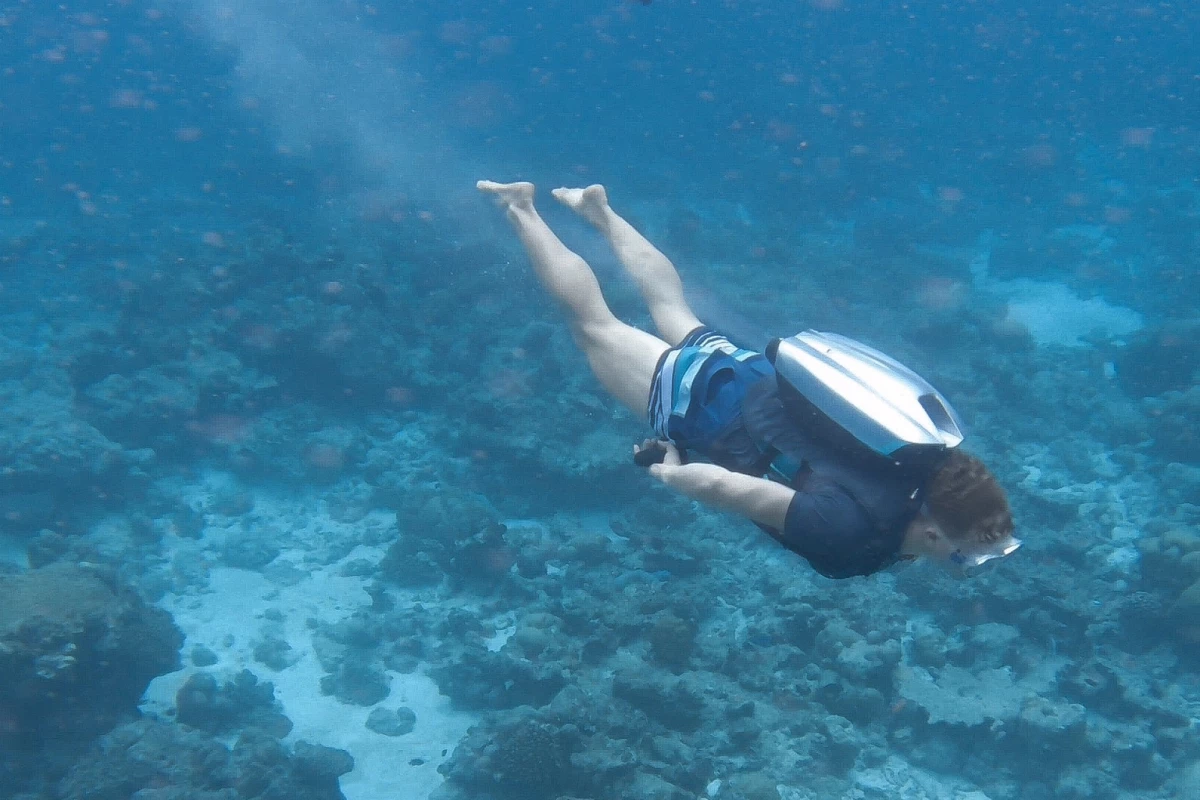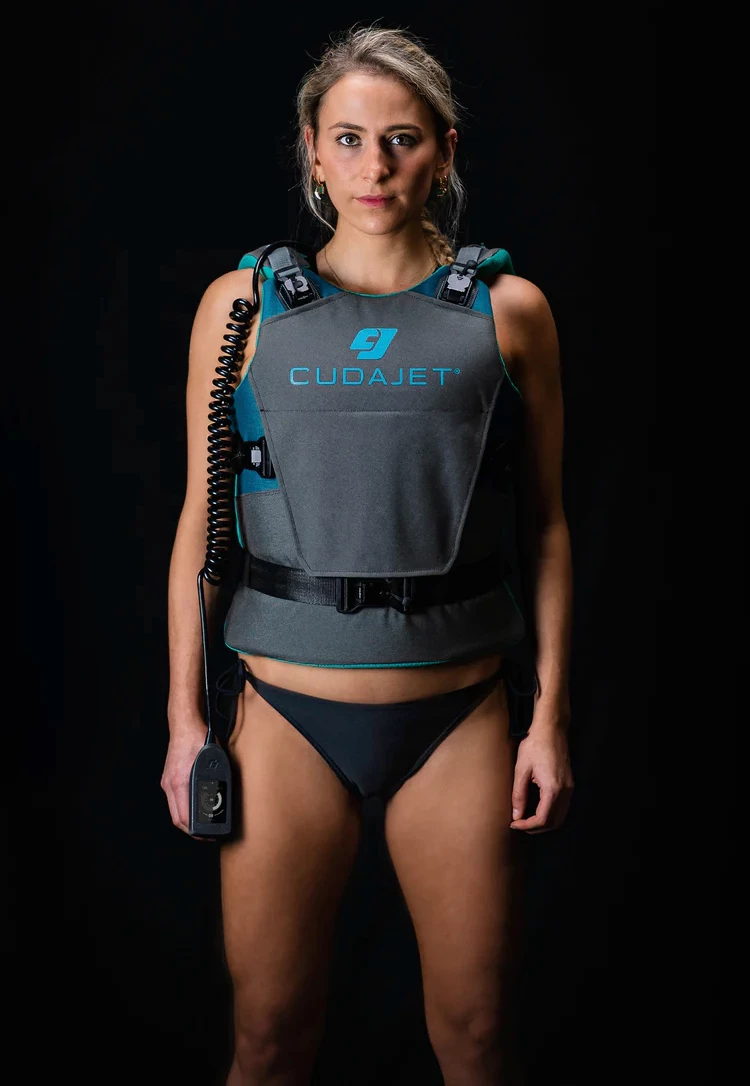While we've seen a number of wearable underwater propulsion systems, they've typically been strapped to the user's arms or legs. The CudaJet is different, in that it's a true backpack-style underwater jetpack.
We first heard about the device five years ago, when it was a prototype called the Cuda.
It was developed by British underwater enthusiast Archie O'Brien while he was in his final year at Loughborough Design School. Among other things, he wanted to create a system that was lighter and faster than existing products. The CudaJet is the final commercial version of what he envisioned.

The setup consists of the dual-jet-drive pack itself, which is attached to a padded neoprene harness that's worn on the torso. A hardwired handheld trigger-style remote is used to control the speed and monitor the lithium battery's charge level – one 75-minute charge is claimed to be good for a runtime of up to 40 minutes.
The jetpack can be used down to a maximum depth of 40 meters (131 ft) and delivers 40 kg (88 lb) of thrust, reportedly taking the wearer to a top speed of 3 meters (10 ft) per second. It's said to tip the scales at 13.2 kg (29 lb) when out of the water, with the harness adding an extra 1.5 to 1.7 kg (3.3 to 3.7 lb) depending on the size.
Pricing for a complete CudaJet package starts at £14,000 (about US$18,021) – we're still waiting to hear back about availability. You can see the jetpack in action, in the video below.
Source: CudaJet







